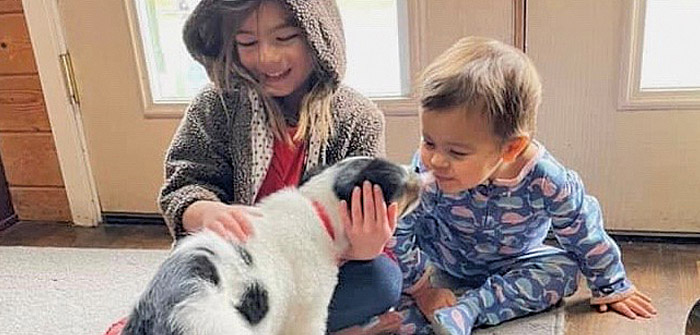(Photo courtesy of Humane Society of Central Oregon)
Contrary to what some people might assume, a humane society is a general term used to describe a certain type of organization; not to be confused with one central organization that has different regional branches across the country and the world. Most of these humane societies are defined by their pursuit of animal welfare and rights, while certain others have historically focused on waterway rescue and providing awards for saving human lives.
The founding of humane societies goes back to the 1700s in the United Kingdom. The first American group of its kind, the American Society for the Prevention of Cruelty to Animals, was founded in New York in 1866. A national organization, the Humane Society of the United States, was created in 1954, and the Humane Society of Central Oregon was founded by Carol and Ira Goff in 1961.
Lynne Ouchida, the director of community partnerships at Humane Society of Central Oregon (HSCO), discussed how years of fundraising from community members allowed the HSCO to go from having a small, makeshift shelter to the current facility on 27th Street that we all know.
“The new 2.4 million dollar facility was realized thanks to 1,202 individuals, families, foundations and businesses. Of the $1,104,500 raised, more than half were from donations of $100 or less,” Ouchida said. “The remaining money came from an existing building fund, anticipated income from our Thrift Store, in-kind contributions and a mortgage.”
Ouchida said that the current facility is anticipated to serve the community and beyond for the next decade.
When they were first founded, the HSCO was more focused on ranching and livestock animals, which adds up, considering the rural and ranching legacy of Central Oregon. Nowadays, most clients are dogs, cats and other commonly found household pets.
While times have changed, the overall mission of HSCO has not; they still stand for animal welfare like they did at their founding, but how they go about achieving that has shifted.
The current mission of HSCO comes in a four-pronged approach. First, the HSCO aims to provide accessible veterinarian care for the whole community. This is done through efforts like creating a mobile clinic that can come to people instead of forcing them to drive over an hour to find medical care for their pet. Also, their vision includes a new public clinic that can provide veterinary care on their current campus. Both methods help alleviate the lack of veterinarian care we have in Central Oregon; an issue so severe that parts of this region are often referred to as “veterinary deserts.”
Next, the HSCO aims to create healthy bonds between pets and people, supported through programs like foster care, as well as educational opportunities for behavior, nutrition and overall pet care.
Another prong includes utilizing their physical campus, a five-acre piece of land. The HSCO plans on using this land by adding isolation kennels to more safely handle treatments for diseased animals, adding to their current clinic to account for a growing community, and creating additional space for programs and staff to better serve the community.
Lastly, HSCO believes in investing in their own people. Caring for that many animals on a daily basis can be a lot of work, and as a result, the HSCO makes sure to keep wages competitive, offer career growth and professional development.
On the importance of an organization like this, Ouchida said, “Central Oregon is an animal centric community that loves animals and expects animals to be cared for in a compassionate, humane manner. HSCO works diligently to help keep people and pets together by providing HOPE Pet Food Assistance, guidance and Spay Neuter Assistance Program (SNAP) for those who qualify. When people find they can no longer care for their pet, HSCO is there when an animal needs us most. Animals will get accidently out of a home, or get lost. HSCO works hard to reunite people with their pets. When animals find themselves homeless, HSCO is there to find them a loving home.”
Also according to Ouchida, the pet industry in Central Oregon and in the entire country has exploded over the last 20 years, “This growth has enabled people to provide better care for their companion animals and also increased expectations for animal welfare to do and provide more for all animals.”
However, tracking this industry can be rather difficult. The HSCO doesn’t have any stats on how many dogs or cats are in the community, or what percent of them are spayed/neutered and chipped. While the county carries data for microchipped dogs, Ouchida said that this only accounts for a small percentage of the total number. With cats, there is even less data because they don’t have the same social status as dogs do.
While the industry has seen some negative trends, like an influx of people surrendering their pets to a shelter during and after covid, it does seem like things are heading in a better direction. Thanks to HSCO and other humane societies like this one, our community and others around the world are receiving education and assistance that helps animals and humans both live better lives.





